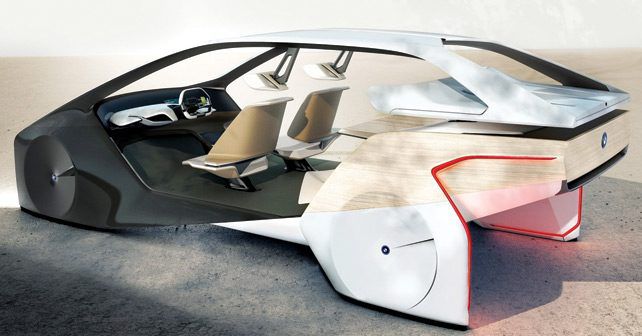
Jens rushes from Vegas to Detroit to gauge how the global auto industry is bracing for another potentially tumultuous year.
With a Trump presidency in the US and Britain leaving the EU, it seems that the free trade movement is grinding to a halt. It’s safe to say that virtually nobody in the auto industry is prepared for the tectonic shifts that 2017 will bring about. And this uncertainty dominated the two international shows that ushered in the new year.
2017 took off in Las Vegas. For the 50th time, the Consumer Electronics Show (CES) opened its doors to the computer nerds, tech geeks and the drivers of the electronics revolution. The auto industry has been part of CES for several years – not only to publicly underscore just how much it’s in touch with the demands of customers, but also because there’s no better place for electronics gurus to network.
And electronics is the driver of change in the auto industry – electrification, autonomous driving and artificial intelligence are the “hot topics” at every press conference and every industry pep talk. But do they actually matter to the customer?
To be blunt, I have my doubts. And I suppose that carmakers do as well, because they find it necessary to create a multitude of scenarios where a vehicle’s occupants would actually enjoy a benefit. And those scenarios seem more than a bit forced.
BMW, for instance, has equipped a small fleet of 5 Series models with several systems to demonstrate the joys and advantages of autonomous driving. In my mind, it’s a bit of an oxymoron to take a car as supremely dynamic as the new 5 Series and attempt to take away the seemingly terrible chore of driving. This BMW concept also grabs info from the driver’s calendar in order to make a plethora of suggestions – all of them centred around consuming and spending money.
A Bosch concept on the CES floor took it a step further. The car can communicate with the driver’s house or apartment – and even check the contents of the refrigerator for the ingredients of a recipe that’s been recommended by an in-car app. If there’s anything missing, the car will direct the driver to a recommended grocery store.
Meanwhile, BMW’s i Inside concept is fitted with a library of 22 books, pillows and a blanket – plus, it’s growing moss under the rear seats (usually not a good sign). And Daimler’s “Fit & Healthy” concept scans its occupants’ vital signs in order to provide “physical and mental relief.” Daimler’s “Vision Van,” meanwhile, is fitted with delivery drones.
It’s no wonder that several other carmakers, who ask to remain unnamed, call CES “overrated,” and predict that autonomous driving technology – in the unlikely scenario it becomes an industry standard – will become a commodity. I.e. it’ll be available off the shelf, which is why they aren’t spending a penny on it.
Leaving Las Vegas with a chartered Daimler jet to Detroit, I was expecting to see some good old-fashioned American iron on its home turf. But there was far too little of it. A few unremarkable crossovers by GM, a 1990s-style Chrysler concept that I had seen at CES, and a small facelift of the F-150 was all the “Big Three” had to offer. What’s worse, Ford virtually sabotaged the show by inviting journos to an embargoed offsite event in the middle of day one. After an outcry by the media, as well as other carmakers whose press conferences would have been affected, Ford pushed it to day two. It was the mildly face-lifted Mustang – not very remarkable, but it would have helped the press days to just show it on the floor.
It was left to the Germans and the Japanese to turn the Detroit auto show into an event worth attending. I think the show’s most beautiful debut was the E-Class by Mercedes-Benz – an ultra-clean, purist 2+2-seater with a number of interesting engine choices (and the most interesting one, an AMG-tuned straight-six, to come later this year). Moreover, there were the face-lifted GLA and the GT Coupe.
Equally interesting, while less elegant, was the boxy and aggressive Audi Q8 – a 550 horsepower plug-in hybrid with styling cues taken from the original 1980 Quattro. And I loved the Volkswagen’s I.D. Buzz concept – an all-electric attempt at resurrecting the original VW Bus. It’s so cute that you just want to pet it and protect it from any mean talk of the diesel scandal. And I suppose that’s part of its purpose...
Worth more than a cursory glance: the new Toyota Camry, whose range is surprisingly topped off by a V6 (I would have put my money on a turbocharged four), and the new Lexus LS uber-luxury sedan, whose range is also surprisingly crowned by a V6 (while it really needs a V8). And the Kia Stinger has kept enough of the 2011 GT concept alive to give a little shock to the German premium carmakers.
In a final twist of the outgoing era, the Environmental Protection Agency (EPA) – working frantically during the last days of the Obama administration – announced that Chrysler was guilty of cheating on emissions (a theme familiar in the industry by now). The company’s stock plunged rapidly, and the story quickly squashed the good news of Chrysler’s billion-dollar investment on US turf. 2017 will undoubtedly be an interesting year for the industry – with unusual potential for either greatness or failure. Or both!
























Write your Comment